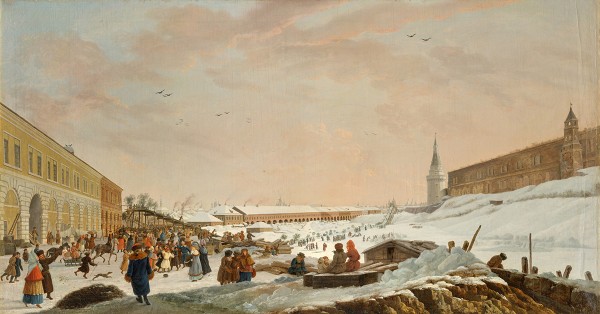The merriest of all the traditional Russian festivals was without a doubt shrovetide. This is the Russian version of Mardi Gras, during which rites were performed to banish winter and welcome spring. The name of the holiday (Maslenitsa or Butter Week) only appeared later and springs from the lavish use of butter in the festive days, with particular respect to pancakes. The pancake was in fact the main symbol of shrovetide. Every day of Butter Week had its own special name. Monday was "meeting", Tuesday was "frolic", Wednesday was "delicacy and revelry", Thursday was "wide", Friday was "evening amusements", Saturday was "meetings of sisters-in-law" and Sunday was "forgive ness". The entire week was spent in merry and exuberant entertainment and hospitality.
The revelry reached its climax at the end of the week, reflected in the popular Russian belief that "not enjoying yourself during shrovetide brings woes and a bad end". An important feature of shrovetide in Russia was the lavish and even excessive consumption of food and drink. The basis of this gorging lay in the pagan belief that overeating would aid fertility. The theme of fertility was also reflected in the tradition of sliding down ice slopes. Play and Passion in Russian Fine Art. St-Petersburg. 1999. P. 86.
The Kremlin wall is port rayed on the right, and beneath it is the frozen Neglinka river, on which we see Muscovites sliding down its ice slopes. The river was later enclosed in a pipe, and fairly recently this part of central Moscow underwent general reconstruction work. Now it is once again being used by Muscovites as a place where they can go for walks and enjoy themselves. Play and Passion in Russian Fine Art. St-Petersburg. 1999. P. 86.

